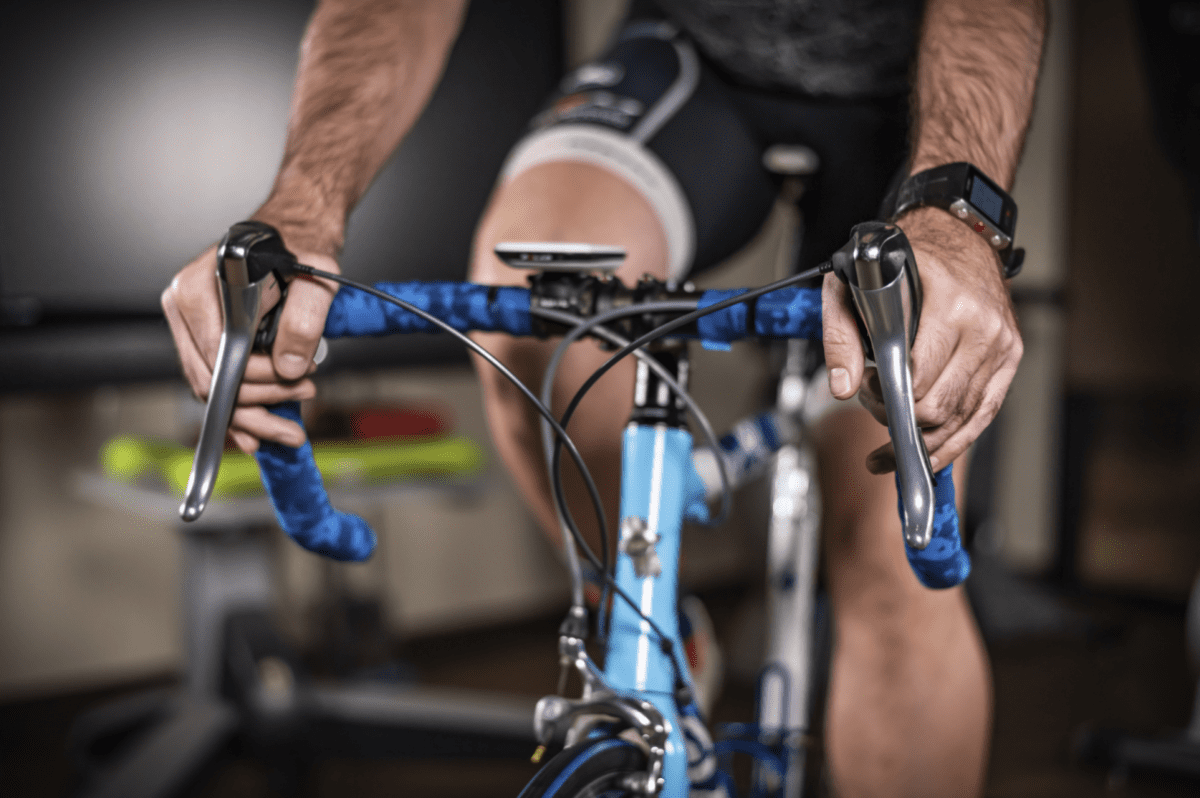If you’re a cyclist spinning at home this winter could make one of the biggest differences to your next cycling season you’ve ever seen. It’ll help you get fitter, save time, and address injury prevention!
Getting fitter, saving time and injury prevention all happen during a spin workout since you don’t have to wait for lights, dodge cars, watch the road for hazards, and meet up with others for safety. There’s also NO coasting! Even the pros do spin workouts all year round indoors on the trainer!
Also, you only need a minimum of gear to prep your own cyclist pain cave for optimizing your training.
Your own bike will work wonderfully; it needn’t be fancy or expensive! It does, however, need to:
- Work well and be properly maintained!
- You need to fit your bike. If you don’t your life on your bike with hard effort will be more misery than you can imagine; get a bike fitting!
Your bike will also appreciate:
- A spin trainer tire – these are very durable and will last several seasons for most cyclists, and are available for both mountain and road bikes. Save yourself the aggravation of a buzzing rear mountain bike tire or the wallet pain of ruining a nice road bike tire by buying one of these – only one – for the rear tire of your bike.
- A rear wheel spin skewer – these are available cheaply and will fit the rear wheel into a bike trainer better than most wheel skewers, saving you on having to replace a ruined skewer and potentially saving you from sudden ‘carpet sprints’ should your bike dislodge itself from the trainer and rocket across the room!
Once your bike is outfitted you’ll also need a bike trainer to put it on. You can save yourself money by getting a used bike trainer but even new they are not that expensive unless you purchase a ‘smart’ trainer.
Do yourself a favor and purchase a trainer (whatever trainer you decide) new with warranty at a store with a great return policy in case you have any issues. I personally have successfully used inexpensive trainers for decades with great effect, though I do also have access to very advanced trainers which I use primarily to test power, VO2Max, and other metrics.
You’ll also want a yoga mat to catch the sweat of your agony and in most cases you’ll also need a foot for the front tire of your bike to level it off so you aren’t riding in a ‘downhill’ position.
Now that your bike and trainer are ready, set yourself up for success with a fan, great music (unless you love to suffer in silence) a towel, and some water or fuel if you require it. For the most part as long as your nutrition is stable a typical workout of 60 minutes requires no fueling or hydration. As time and intensity increases fuel does become more relevant but remember: for hydration, simply drink when you’re thirsty!
Alright, at this point if you have ‘that friend’ who re-mortgaged their home to create the ultimate cyclist pain cave of suffering or spent their entire student loan on a bike, I have great news for you. It’s not what you’ve got, but how you use it, that makes the biggest difference!
Here’s what you need to know: The basics of using your bike trainer:
- Warm up first – 10-15 minutes – get sweaty!
- Introduce some harder efforts for 30-60 seconds in the warm to prepare for the work coming up – you can either increase the resistance at your self-selected rpm (cadence) or you can increase your cadence (rpm) at a given resistance. Or both!
- Get cycle strong! Longer sets of 4-10 minutes in the hardest gear you can handle at 40-60 rpm in early winter is necessary to be able to handle the power you’ll want to be pushing in later winter and early spring. 3+ sets please!
- Recover between your sets! Longer recovery between sets 3-6 minutes means better performance of your work sets, and a better stimulus to change your body! Slow improvement as a cyclist is often too little hard work on the bike. Work hard! Rest hard as well! That polarization will take you places you’ve never been with respect to fitness!
- Get cadence variable! Work on sets that vary between 40-60 rpm, 70-90 rpm and 100+ rpm or do a few sets of each!
- Get your sprint on! Those harder efforts in your warm up should turn into 10 or 20 second sprints as your body gets used to the fit of your bike and control of the gearing.
How often should you spin?
Three times a week; optimally to a daily workout of 30-90 minutes, and in fact with cycling the training loads that most humans can tolerate is actually immense compared with other sport! If your goal is a better season next season, then three times a week will get you there!
How long? 60-90 minutes! Make it count!
What types of workouts?
- Strength – every week, all year round, with an emphasis on building this in winter and maintaining this in summer. These workouts are more frequent in winter, less in summer.
- Cadence variations. Get comfortable at all speeds of pedalling and improve power and efficiency as much as possible no matter what you ride or where you ride! This is a good idea all year round!
- Peak effort work once a week, and then add in peak speed work as racing or event season approaches. Peak effort costs in terms of needing recovery but it will fundamentally change you.








